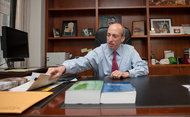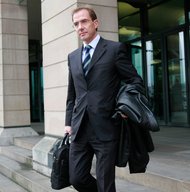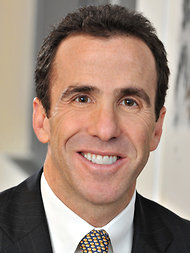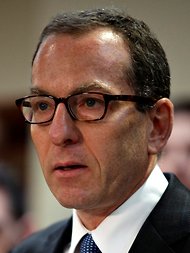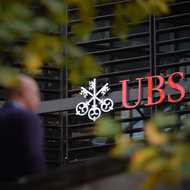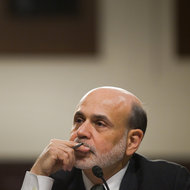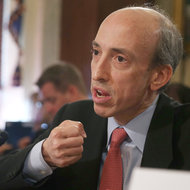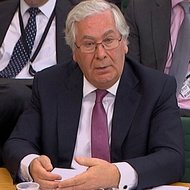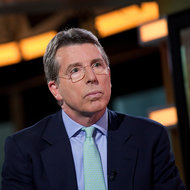The Commodity Futures Trading Commission has taken the first step in an examination of warehouse operations that are controlled by Goldman Sachs, Glencore Xstrata, the Noble Group and others and used to store vast amounts of aluminum. The operations were the subject of an article by The New York Times that was published on Sunday.
The commission has told the firms to retain internal documents and e-mails related to the businesses, according to people who reviewed the requests and spoke on the condition of anonymity because the notices had not been made public.
The call comes as a Senate committee prepares to open hearings on Tuesday on how Wall Street has extended its reach beyond banking and into global markets for essential commodities. The panel is expected to focus on how banks have taken advantage of loosened federal regulation to buy warehouses, pipelines, oil tankers and other infrastructure used to store basic goods and deliver them to consumers.
The overarching question is whether banks should control the storage and shipment of commodities, and whether such activities could pose a risk to the nation’s financial system.
But other crucial issues are expected to arise as well. Among them is how Wall Street’s push into these markets has affected the prices paid by manufacturers and ultimately consumers. Another is whether Goldman and Morgan Stanley have operated their storage facilities at arms’ length from their banking business, as required by regulators.
Goldman has exploited industry pricing regulations set by the London Metal Exchange by shuffling tons of aluminum each day among the 27 warehouses it controls in the Detroit area, The Times reported on Sunday. The maneuver lengthens the storage time and generates millions a year in profit for Goldman, which charges rent to store the metal for customers, the investigation found. The C.F.T.C. issued the notices late last week, and it was unclear on Monday whether the agency or other authorities would open a full-fledged investigation into banks’ activities.
The agency’s request included a specific admonition against destroying internal documents or deleting e-mails, a warning that often precedes more formal inquiries. Among other things, the agency asked the companies to retain communications regarding monetary incentives that they provide to customers to store metal in the warehouses, as well as any complaints they may have received about their practices, according to the people who have reviewed the notices.
The delays at Goldman’s Detroit-area warehouses, which are owned by a subsidiary, Metro International Trade Services, make aluminum more expensive nearly everywhere in the country because of a formula used to determine the cost of the metal on the spot market. The delays are so long that Coca-Cola and many other manufacturers avoid buying aluminum stored there. Nonetheless, they still pay the higher price.
Michael DuVally, a Goldman spokesman, said that Goldman had arranged its ownership of Metro to be in complete compliance. A spokesman for the commission declined to comment.
Wall Street’s maneuverings in the commodities markets have added many billions to the coffers of investment banks like Goldman, JPMorgan Chase and Morgan Stanley, while forcing consumers to pay more for gasoline, electricity and a wide range of products, from cars to cellphones. In the last year, federal authorities have accused three banks, including JPMorgan, of rigging electricity prices, and on Monday JPMorgan was working to reach a settlement that could cost it $500 million.
Tuesday’s hearings, led by Senator Sherrod Brown, Democrat of Ohio, will focus on banks’ ownership of aluminum warehouses, oil tankers and other facilities. Among those scheduled to testify is Saule T. Omarova, a professor at the University of North Carolina at Chapel Hill, who has been critical of bank ownership of commodities operations, and Tim Weiner, an executive at MillerCoors, the big brewing company.
For much of the last century, banks were barred from owning nonfinancial businesses, and vice versa. These restrictions were weakened or lifted during the 1990s, when Congress allowed banks to expand into storing and transporting commodities.
Questions about Wall Street’s activities in the commodities markets have been growing for years. A spokeswoman for the Federal Reserve Board said last Friday that the Fed was “reviewing the 2003 determination that certain commodity activities are complementary to financial activities and thus permissible for bank holding companies.”
In 2008, during the depths of the financial crisis, Goldman Sachs and Morgan Stanley were granted bank holding company status; before that time they had been investment banks and not subject to the restrictions on commodities operations that covered commercial banks.
Still, it is unclear if big banks would be required to divest themselves of their commodities operations immediately. Goldman Sachs and Morgan Stanley purchased some of these operations as part of their merchant banking units, and regulations give them 10 years from the date of purchase to sell them. Goldman Sachs bought Metro International, the warehouse unit, three years ago, meaning it could hold on to the warehouse company until at least 2020.
One line of regulatory inquiry could relate to whether officials at Goldman, a bank holding company, are sufficiently separated from the activities of the merchant banking unit, which actually owns Metro International. Under the terms of the exemption under which Goldman bought the company, the two are supposed to be separated to prevent conflicts of interest.

Article source: http://www.nytimes.com/2013/07/23/business/inquiry-possible-into-storage-of-commodities-by-big-banks.html?partner=rss&emc=rss
